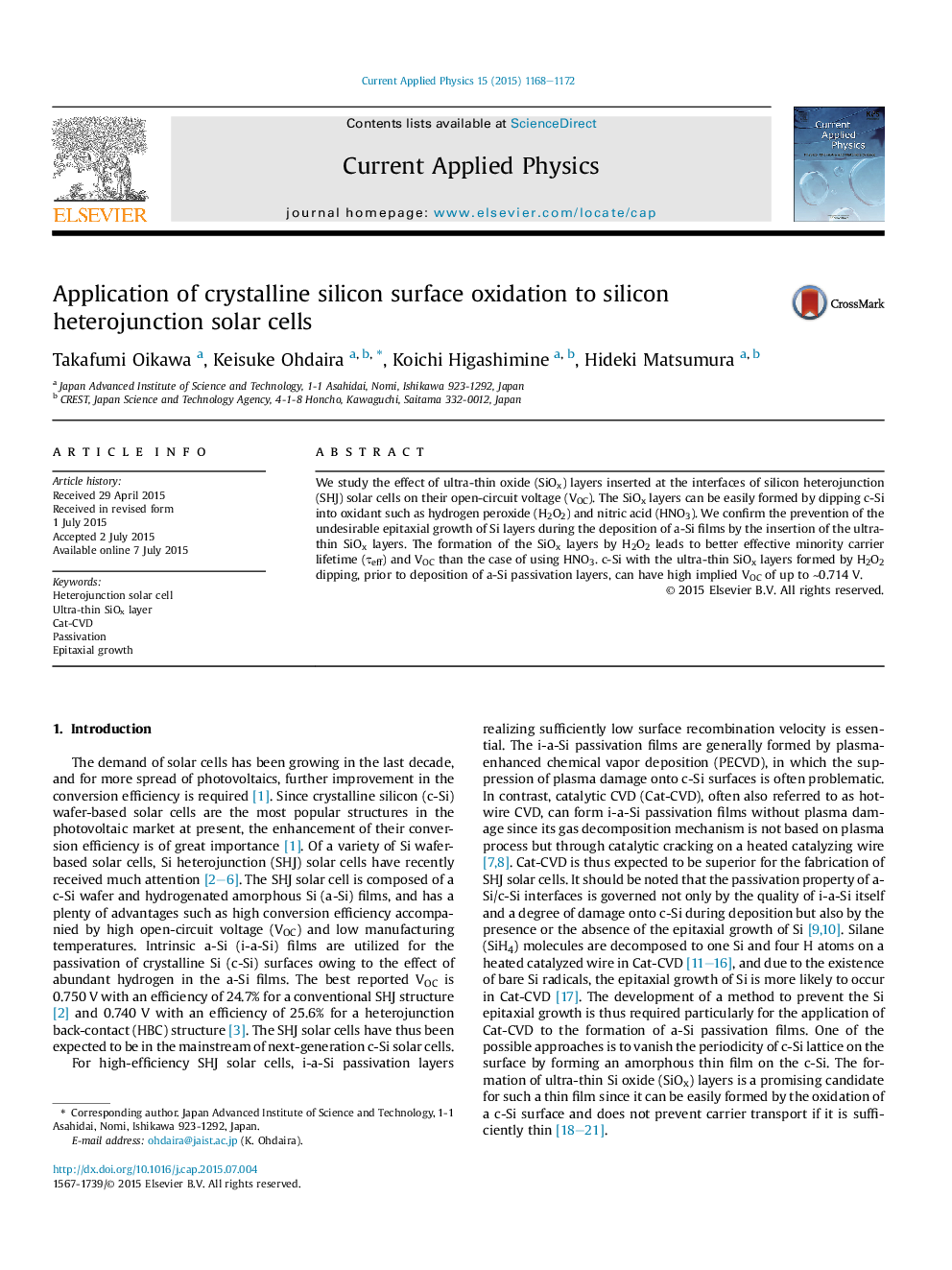| Article ID | Journal | Published Year | Pages | File Type |
|---|---|---|---|---|
| 1785628 | Current Applied Physics | 2015 | 5 Pages |
•We apply surface oxidation to c-Si for a-Si/c-Si heterojunction solar cells.•Undesirable epitaxial growth can be prevented by formation of the oxide layers.•We examine of the heterojunction solar cells properties which applied oxidation.•We characterize oxide film properties with type of oxidant solution.
We study the effect of ultra-thin oxide (SiOx) layers inserted at the interfaces of silicon heterojunction (SHJ) solar cells on their open-circuit voltage (VOC). The SiOx layers can be easily formed by dipping c-Si into oxidant such as hydrogen peroxide (H2O2) and nitric acid (HNO3). We confirm the prevention of the undesirable epitaxial growth of Si layers during the deposition of a-Si films by the insertion of the ultra-thin SiOx layers. The formation of the SiOx layers by H2O2 leads to better effective minority carrier lifetime (τeff) and VOC than the case of using HNO3. c-Si with the ultra-thin SiOx layers formed by H2O2 dipping, prior to deposition of a-Si passivation layers, can have high implied VOC of up to ∼0.714 V.
